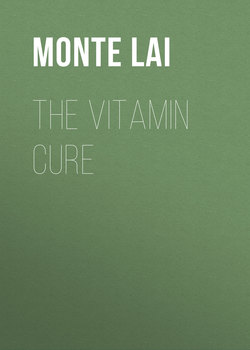Читать книгу The Vitamin Cure - Monte Lai - Страница 15
На сайте Литреса книга снята с продажи.
Оглавление6
VITAMIN B6 (PYRIDOXINE)
Vitamin B6 is also known as pyridoxine. In the 1930s, rats were commonly used as laboratory animals to study the nature of human diseases. Scientists noticed that rats developed a skin disease called “rat acrodynia” if fed with semisynthetic feeds containing thiamine and riboflavin but none of the other water-soluble nutrients. In 1934, Paul Gyorgy discovered that the skin disease disappeared if a water-soluble nutrient was added to the semisynthetic feeds. He called this new water-soluble nutrient “vitamin B6.” In 1939, scientists confirmed that the chemical structure of vitamin B6 was pyridoxine. In subsequent years, pyridoxine was shown to be involved in the synthesis of PLP and PMP coenzymes.
PLP and PMP coenzymes participate in more than 100 different enzymatic reactions involved in various metabolic conditions, one of which is one-carbon metabolism. One-carbon metabolism has multiple functions in the body, the two most important of which are the methylation of DNA and synthesis of methionine. Vitamin B6, vitamin B9, and vitamin B12 are all involved in one-carbon metabolism. Vitamin B6 deficiency leads to insufficient methylation of DNA, which is a hallmark of cancer cells. In addition, vitamin B6 deficiency can hinder the synthesis of methionine, an essential amino acid. Methionine deficiency induces a high blood level of homocysteine, increasing the risk of cardiovascular diseases such as stroke and heart disease.
What Are the Symptoms of Vitamin B6 Deficiency?
• The major symptoms of vitamin B6 deficiency are peripheral neuropathy (causing damage to peripheral nerves), depression, epilepsy, anemia, and allergies. Many foods contain vitamin B6, so vitamin B6 deficiency is rare. Patients with kidney disease or kidney malfunction are at risk of vitamin B6 deficiency. According to the data from the Centers for Disease Control and Prevention, 10% of the US population is vitamin B6 insufficient.
Prevention and Treatment of Diseases
• Prevention. Meta-analysis confirms that vitamin B6 can prevent breast cancer (47), colorectal cancer (56), Parkinson’s disease (96), renal cell cancer (100), and venous thrombosis (110). In addition, vitamin B6 may prevent coronary artery disease (57), stroke (108), heart disease (73), and depression (58).
• Treatment. Meta-analysis confirms that vitamin B6 can help prevent the recurrence of stroke (108). Vitamin B6 may also reduce vomiting during pregnancy and mitigate symptoms of depression (58).
Which Food Items Are Vitamin B6 Rich?
Vitamin B6 is a nutrient essential to maintaining the normal metabolism of red blood cells and the regulation of immune and neuronal functions. The body cannot produce vitamin B6; therefore, it has to be obtained from foods. Meats—such as chicken, beef, and pork—are excellent sources of vitamin B6. Fish like cod, salmon, and trout are good sources as well. Many vegetables are also rich in vitamin B6, including bell peppers, spinach, potatoes, and broccoli.
This list of vitamin B6–rich food items is adapted from information provided by the NIH Office of Dietary Supplements.
| FOOD | PORTION | VITAMIN B6 CONTENT, MG | % DAILY REFERENCE VALUE |
|---|---|---|---|
| Chickpeas | 1 cup | 1.1 | 55 |
| Beef liver | 3 ounces | 0.9 | 45 |
| Tuna | 3 ounces | 0.9 | 45 |
| Salmon | 3 ounces | 0.6 | 30 |
| Chicken breast | 3 ounces | 0.5 | 25 |
| Potatoes (cooked) | 1 cup | 0.4 | 20 |
| Turkey | 3 ounces | 0.4 | 20 |
| Banana | 1 | 0.4 | 20 |
| Nuts | 1 ounces | 0.1 | 5 |
| Spinach | ½ cup | 0.1 | 5 |
Daily reference value of vitamin B6 is 2 mg according to the 2013 FDA food-labeling guidelines.
What Are the Recommended Dietary Allowances for Vitamin B6?
| 1–3 years | 0.5 mg |
| 4–8 years | 0.6 mg |
| 9–13 years | 1.0 mg |
| 14–18 years | 1.3 mg (boys); 1.2 mg (girls) |
| 19 years and older | 1.7 mg (men); 1.5 mg (women) |
The upper daily intake limit of vitamin B6 is 100 mg.
Vitamin B6 Supplements
• Dosage. The most common dosages of vitamin B6 supplements are 50–100 mg.
• Pregnancy. Vitamin B6 may alleviate vomiting during pregnancy. The suggested daily dose is 30 mg.
• Tardive dyskinesia. Vitamin B6 is effective in treating tardive dyskinesia. Tardive dyskinesias are involuntary movements of the face, tongue, lips, trunk, and extremities caused by long-term medication with an antipsychotic drug, such as aripiprazole. The suggested daily dose of vitamin B6, in this case, is 250 mg.
• Congenital homocystinuria. Vitamin B6 may improve the symptoms of congenital homocystinuria patients who have an excess of homocysteine in the urine. The suggested daily dose is 250 mg.
Safety Issues
• Side effects. Taking doses of vitamin B6 higher than 2 g daily may be harmful to the nervous system. Symptoms include numbness of extremities, stabbing pain, and, in severe cases, difficulty walking.
• Diseases. High doses of vitamin B6 exacerbate the risk of heart disease, stroke, and death in patients with diabetes with kidney disease.
What Types of Drugs May Interact with Vitamin B6?
• Oral contraceptives. These can reduce the blood level of vitamin B6. Women who use oral contraceptives should consider taking vitamin B6 supplements.
• Antihypertensive drugs. Vitamin B6 enhances the effect of some antihypertensive drugs, such as diltiazem and amlodipine, and interferes with medications for treating Parkinson’s disease.
• Other medications. Drugs like hydralazine to treat high blood pressure and heart failure, penicillamine to treat rheumatoid arthritis, and theophylline to treat respiratory diseases can cause vitamin B6 deficiency.
